 See what to take on an African Safari, especially if you’re planning your first safari, or you’re in a last minute packing frenzy.
See what to take on an African Safari, especially if you’re planning your first safari, or you’re in a last minute packing frenzy.
Travel Documents:
- Valid passport and visa
- Airline ticket
- International health card with immunizations (Yellow fever)
- Travel insurance
- Medical insurance
- US$ cash / Credit Card
Important things you don’t want to forget:
- Sunblock – 30 SPF sunscreen or more.
- Sun hat – avoid the floppy straw hat, as experience has shown you’ll spend more time clutching onto it than the shade is worth! Take a snug fitting peak or one of those typical safari hats that compliment khaki shorts and protect your neck too.
- Sunglasses – good for keeping dust and small flying insects out of your eyes, as well as the blazing African sun. Polarised glasses offer great protection from UV radiation.
- Torch or headlight – for getting around camp at night and to/from the safari vehicle for night drives without stepping on any wild animals’ toes.
- Insect repellent – particularly important as part of Malaria prevention in high risk areas (check if you need to take anti-Malaria medication before you set off on your safari).
- Medication – any personal medication and Malaria prophylactics where recommended.
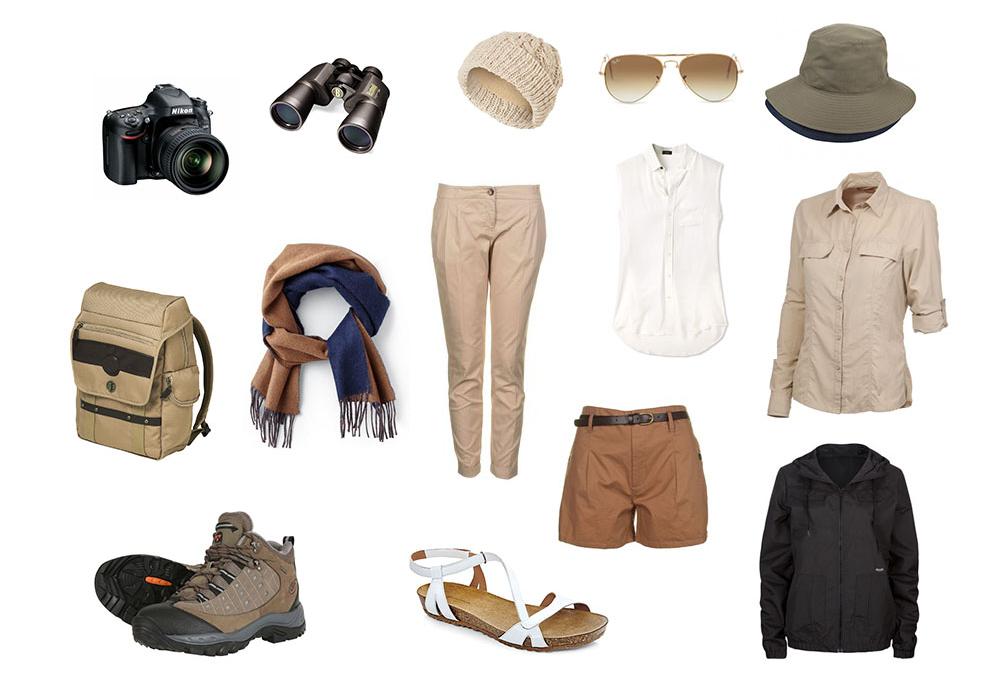
You’ll kick yourself if you forget to take these things on safari:
- Binoculars – you don’t want to wait to share binoculars, because by the time it’s your turn the action is often over. Take your own binoculars, even night vision binoculars if you can!
- Digital Camera – a Single Lens Reflex (SLR) with memory card ports supporting SD cards, or a smaller Superzoom Camera. It’s size (not too big) and a good zoom lens that count when choosing what camera to take on safari.
- Day backpack – a bag for day trips and excursions will come in very handy (a real must). You may want to take a money belt (also known as a moon bag, fanny pack and bum bag) for travel in cities.
- Recharge devices – The correct plugs or adaptors for the areas your safari visits and all of your chargers, batteries and device power cables.
- Camera storage devices – enough memory for a bazillion photos! Take extra memory space along.
- Swimwear – costumes for refreshing dips in the camp swimming pools, waterfalls, rock pools, lakes, oceans etc.
- Necessary toiletires – this is for the ladies travelling at that time of the month.
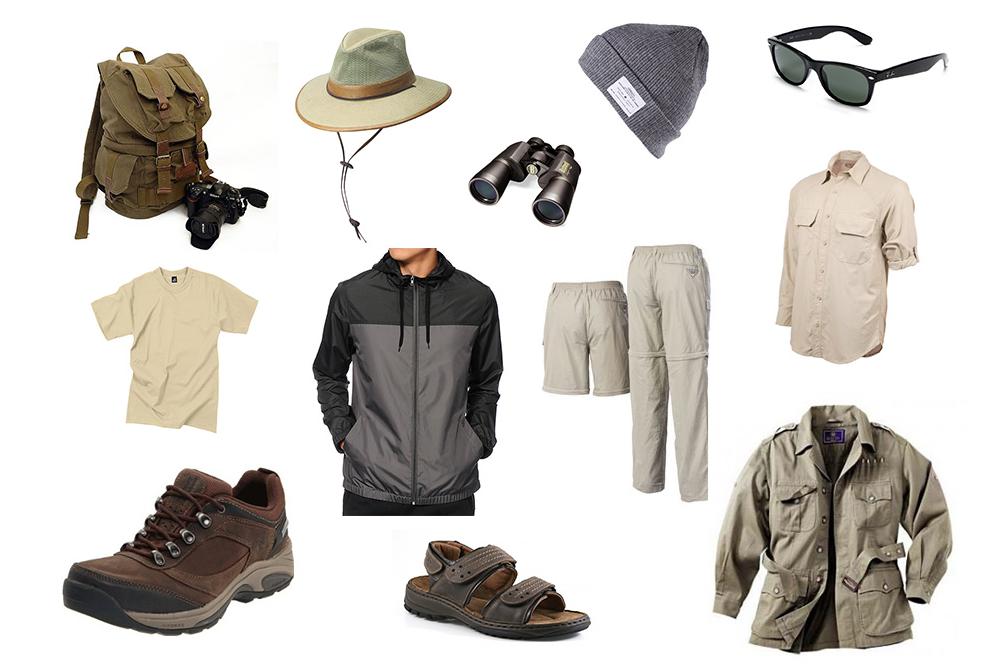
Handy little things to take along:
- Pocket knife – you’ll get lots of cool opportunities to utilize your pocket knife and feel like a real outdoor survivor.
- Hand sanitiser or wet wipes – great for keeping fresh and healthy on the road, especially if access to clean water is limited.
- Ziploc bags – so handy, you’ll keep finding more uses for these as you go. A great way to waterproof items and keep snacks fresh and safe from creatures.
- Antiseptic cream – a multi-purpose ointment for minor scratches, bites and burns (like Zam-buk).
- Lip ice – being outdoors in often hot and dry places, lip ice is great for preventing and soothing chapped lips.
- Sarong or kikoi – always useful when travelling. Used as a scarf, extra layer for warmth, to keep the sun off your skin, a picnic blanket or light towel and more.
- Prescription med: Do not forget to put Prescription medications in your hand lagguage and make sure you have enough of each type to last your entire safari.
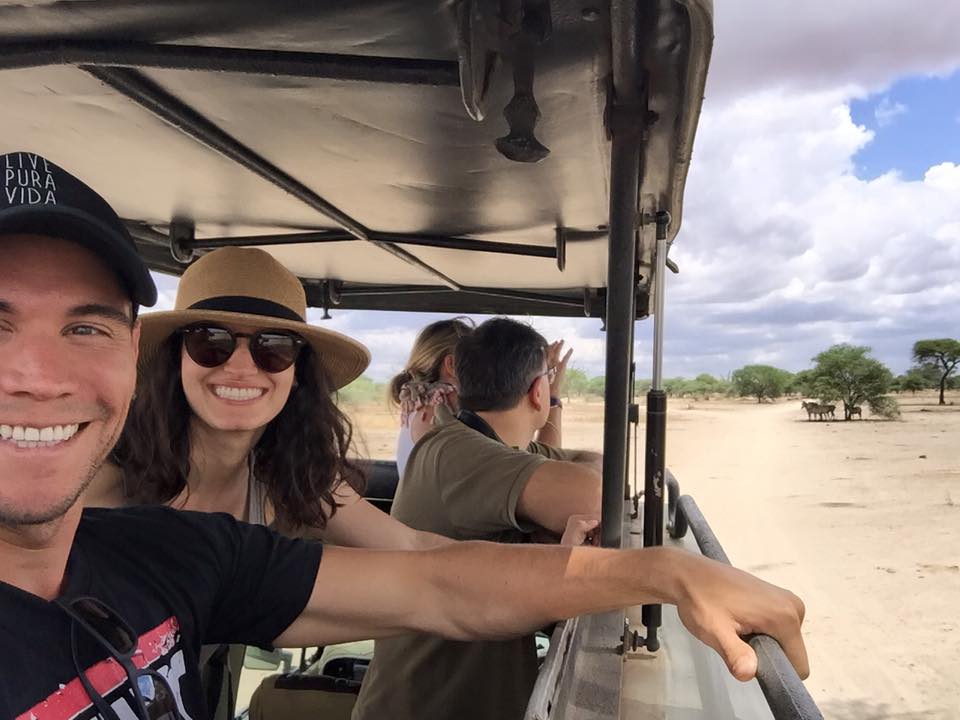
Other things you will be glad you took on Safari in Africa:
- Hammock – especially for beach tours and safaris into the bush where you will want to laze in the scenic settings.
- GPS device – we won’t get lost on an Northern Circuit Adventure but a handheld GPS device is handy for finding local sights and restaurants and keeping track of your journey through Africa.
- Digital Camcorder – a small handheld video recorder for making personal and YouTube videos that capture all the action on your trip.
- A good book, iPod or games – to keep you entertained on the road and while waiting for transfers and relaxing on your safari.
- A small diary – for recording your travel experiences and noting down the names of animals/birds sighted on game drives.

Clothes you’ll want to pack:
- Light-weight long sleeved shirt or two – keep the sun and insects out and stay warm during cool morning and evening periods.
- Closed shoes – for walking in the bush or in wet conditions. You don’t need Doc Martens or army boots, just worn in, comfortable and sensible footwear.
- Open shoes – light-weight, slip on shoes for around camp and at the pool and beach.
- Long pants and/or shorts – I recommend long pants to protect your legs from scratchy bushes (if walking in the wild) and insect or tick bites.
- A jacket – usually a light-weight, rainproof jacket will be enough for cool nights, unless you’re heading to more mountainous and colder areas (check seasons and ask your tour company).
- Take natural and light-coloured clothing – avoid the glaring primary and neon colours that get you spotted first. Black garments will get you baking in the sun, while white clothes will create glare and become brownish soon anyway. Camo wear isn’t necessary, just go with neutral tones.
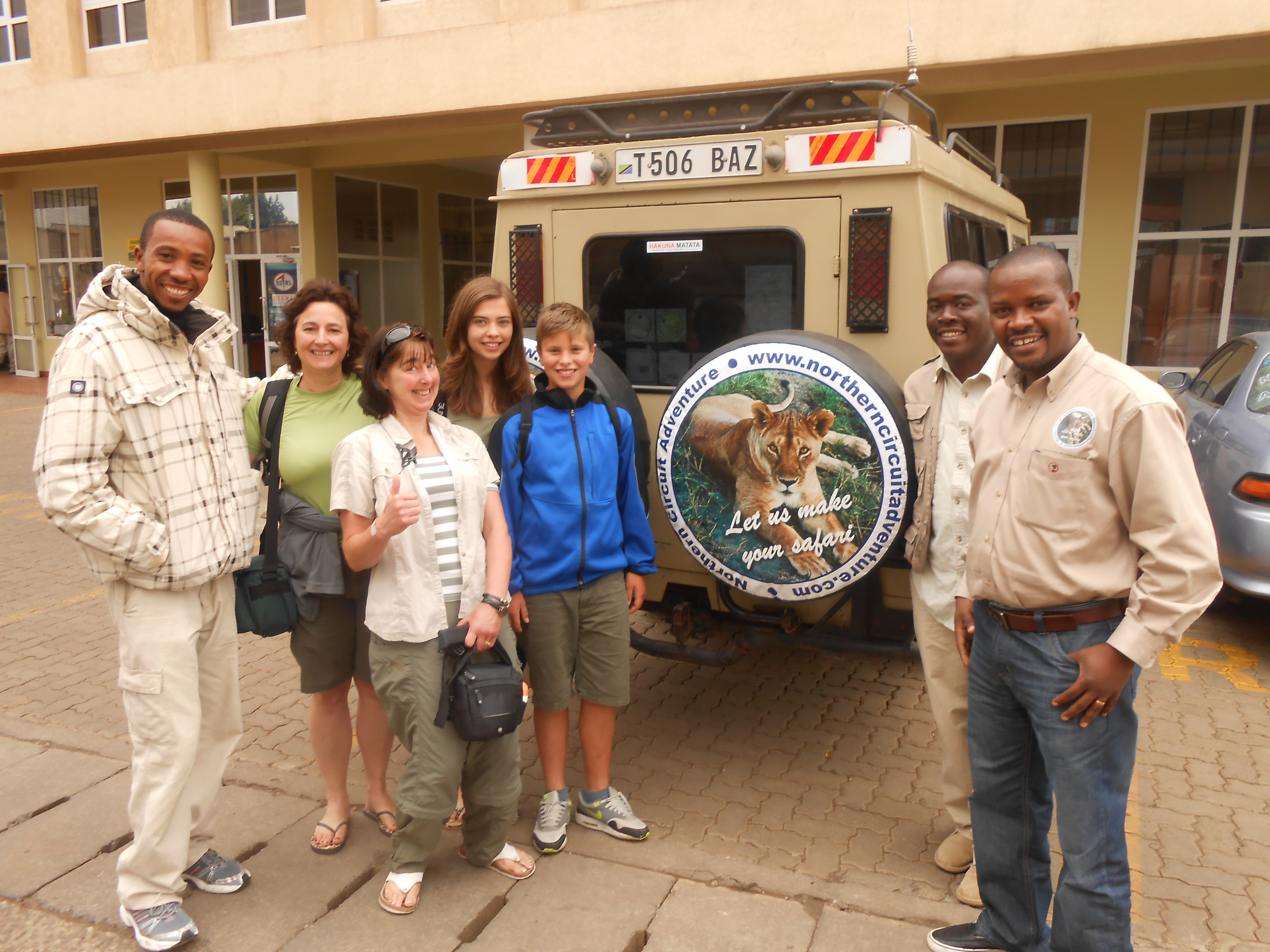
When packing for African Safaris remember:
- Don’t overdo it. Packing too much is a common mistake!
- When going on an African Safari with a tour supplier (like Northern Circuit Adventure), you don’t need to worry about the emergency first-aid kit and most of your meals are included in the tour price.
- We know where to stop for supplies and can get hold of most important things, if and when you are caught unprepared.
- Towels, bedding/sleeping bags and basic toiletries may be provided as part of your trip – check when booking your African Safari with us!
Final Checklist for Climbing Mount Kilimanjaro:
One of the important prerequisites of a successful summit attempt is being properly equipped. Ensure that you are well equipped – print the Checklist below and mark it off, it will be an essential part of your preparation for the climb. Please remember to limit the weight of your duffel bag and its content, to be carried by the porters on the climb, to 15 kg (32 lbs.) or less. Extra luggage, including clean clothes to wear after your climb, can be left at the hotel in Moshi. Please feel free to contact us should you have any further questions regarding the checklist. We also provide a complete and quality rental service on all the equipment required on the mountain, as a sensible alternative to purchasing. Please click Gear Rental for more information.
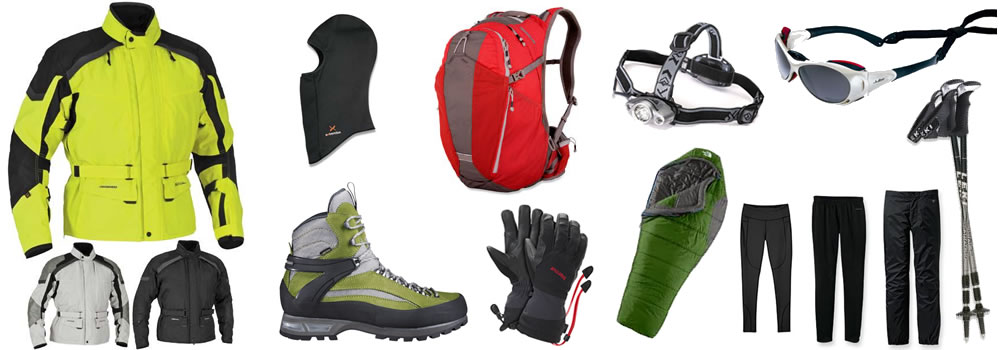
Make sure you have everything you need to help you successfully summit the Roof of Africa.
Essential Items:
- Duffel bag – large enough for all climbing gear and clothing. To be carried by the porters. An extra bag to be left at the hotel with extra gear.
- Small luggage lock – to lock zippers.
- Day backpack – between 20 – 35 litres. Large enough to carry your water, camera, raincoat, lunch pack, snacks & warm clothing.
- Sleeping bag.
- Ski-pole / walking stick.
- Water bottle / containers.
- Kilimanjaro map (Can be bought at Park gate).
High Altitude Gear:
- Waterproof, breathable & windproof jacket (outer wear like Ventex, Gore-Tex or Jeantex).
- Waterproof, breathable & windproof pants (outer wear).
- Polar fleece (middle layer).
- Thermal underwear (under layers).
- Mittens or warm gloves.
- Glove liners (if necessary).
- One pair thermal (polertex) socks.
- Balaclava.
- Gaiters.
- Thermal water flask.
Hiking Gear:
- Shorts.
- Hiking pants.
- Regular underwear.
- T-shirts.
- Raincoat or Poncho.
Footwear:
- Water resistant semi-stiff hiking boots – mid weight boots work great.
- Shoes for overnight camps – i.e. sneakers, running shoes, etc.
- Socks – several pairs for the climb.
- Liner socks – to keep your feet dry and limit the risk of blisters.
Equipment:
- Sun hat or similar (with a brim).
- Collapsible ski stick (optional but highly recommended).
- Water bottles – two or three (total capacity at least 4 litres).
- Head lamp, good strong one with spare batteries and an extra light bulb.
- Water purification tablets.
- Sunglasses, good quality dark lenses for the climb, with a securing strap.
- Flashlight (torch) with spare batteries.
Personal Items:
- Toilet kit (soap, tooth brush, toilet articles, wet wipes, etc.).
- Towel.
- Sun screen and lip protection, SPF 30+.
- Ziploc bags, to protect camera, binoculars, etc. from dust.
- Toilet paper.
- Money belt for passport and valuables.
Medical and First Aid Supplies:
- Headache tablets.
- Altitude sickness-Diamox (if not allergic to sulpha).
- Diarrhoea – Imodium.
- Nausea – Valoid.
- Malaria – Prophylaxis.
- Water purification tablets.
- Painkillers.
- Muscular sprains.
- Abrasions blisters and cuts – Plaster, bandages.
- Antiseptic cream – Betadine.
- Flu and colds.
- Eye drops.
- Insect repellent.
Optional Items:
- Camera, extra lenses and film (ASA 200 film recommended).
- Binoculars.
- Powdered sports drinks for the climb (ex. Game or Isotonic drinks).
- Pocket knife.
- Notebook & pencil.
- Plastic bags to keep clothing dry (masking tape).
- Energy snacks and sweets.
- Video camera, tapes, battery packs and tri-pod.









